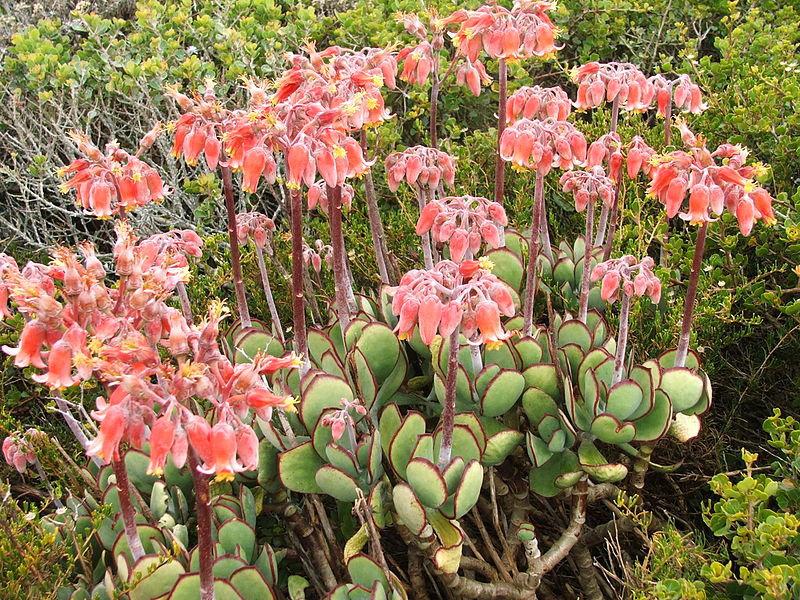Cotyledon orbiculata
 Image: Abu Shawka
Image: Abu Shawka
Description
Cotyledon orbiculata is an extremely variable species that grows to approximately 1.3 m in height. It has gray-green leaves that can be up to 13 by 7 cm with a white powdery substance on them that helps reflect sunlight and conserve water. The shape of the leaves was thought to have a resemblance to a pig's ear, thus the common name. The bell-shaped flowers are small, usually less than 3 cm in length, and droop from the top of a 60 cm tall stalk. The flowers are usually orange-red but yellow varieties also exist.The brightly coloured flowers attract bees and birds, which feed on the nectar of the plant. The silver-grey leaves of some forms owe much of their attractive colouring to a powdery white coating which may assist in reflecting much of the sun's heat to prevent excessive water loss from the thick succulent leaves.
This is a well-known medicinal plant. The fleshy part of the leaf is applied by many South Africans to soften and remove hard corns and warts. The Southern Sotho use a dried leaf as a protective charm for an orphan child and as a plaything. In the Willowmore District, the heated leaf is used as a poultice for boils and other accessible inflammations, earache in particular .
Propagation instructions - cuttings
Taking tip cuttings is the fastest method of increasing plant numbers; they must be kept fairly dry to prevent rotting. Once the tip cuttings have rooted they can be transplanted in a medium of 2 parts gravel to 1 part compost.
Propagation instructions - seeds
Plants may be grown from seed, but take care in the early stages not to over-water. The best time to sow the seed is in spring, and they should be kept moist, not waterlogged. Once the seedlings have reached 20-40 mm they can be transplanted.
Sources and references
Scientific name
Cotyledon orbiculata
Common name(s)
Pig's ear
Features
- Drought-resistant
- Easy to grow
- Good potplant
- It provides medicinal value
- Suitable for clay soil
- Suitable for sandy soil
- This is a bird-friendly species
- This will attract honey bees
- Will attract sunbirds
